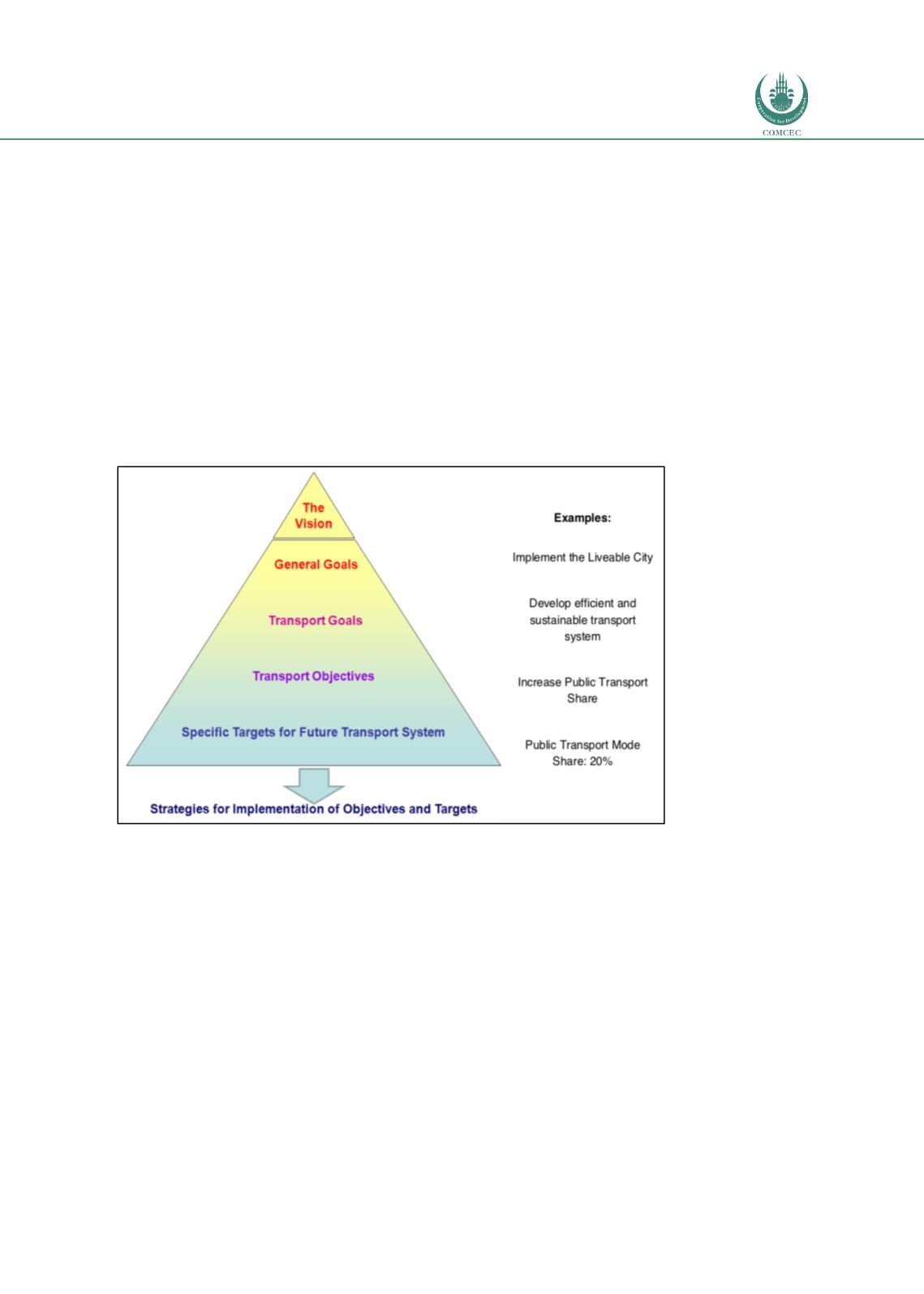

Planning of National Transport Infrastructure
In the Islamic Countries
115
4.
The size and the quality of the expatriate labour force and the selected path of development
5.
Economic growth, social development and environmental management
In 2008 Qatar started its
integrated planning process
with the drafting of the first Qatar National
Vision 2030. It had set a planning horizon of 20 years. Since then every five years the plan is
being revised to check on the real and concrete implementation of the objectives set. In
particular, it is checked for the harmonization among national and regional plans with the same
time pattern or when major changes occur. The goal for Qatar is to launch a new plan every 20
years.
In Qatar the logic of “policy first” prevails in the transport planning framework. Embedded in
the overall policy plan of Qatar National Vision 2030, as seen above, there are requirements
which transport plans have to rely on
. Figure 30clearly reflects this.
Figure 30: Consistent system of Vision, Goals, Objectives and Targets
Source: Qatar 2008 Transport Objectives for Qatar
Furthermore, the government puts strong emphasis on
the needs and the future of the users
of
the transport infrastructure. This information is mainly obtained through surveys (see section
3.5.6).
The development of each project involves its stakeholders, mainly consisting of Ministerial and
Municipal Departments, and service providers of drainage, sewerage, water supply, cooling and
electricity that are generally categorized according to their role, sector and influence in
relevance to the NTI plans. Their input and requirements are considered in respect to their
position and role regarding the plan. The involvement of stakeholders generally occurs through
regular meetings and workshops throughout the whole preparation period of NTI plans. In
Qatar, land planning (via the Ministry of Municipality and Environment) and transport
infrastructure planning (via the Ministry of Transport and Communications) are well integrated.
















